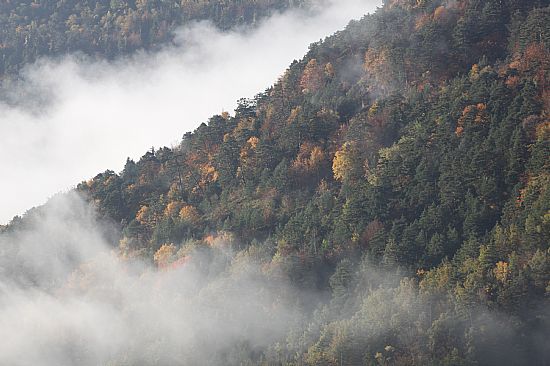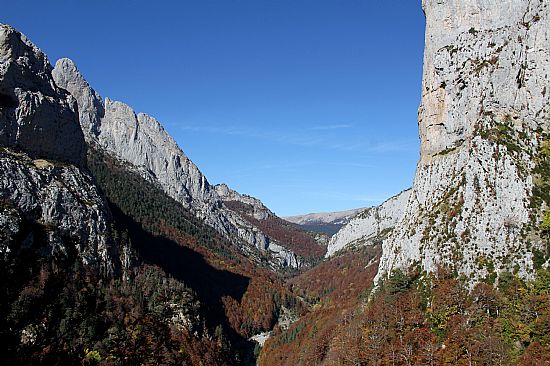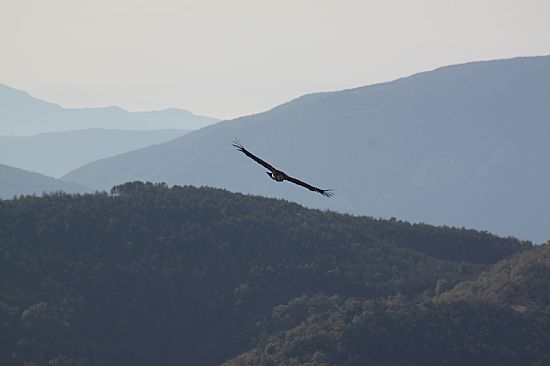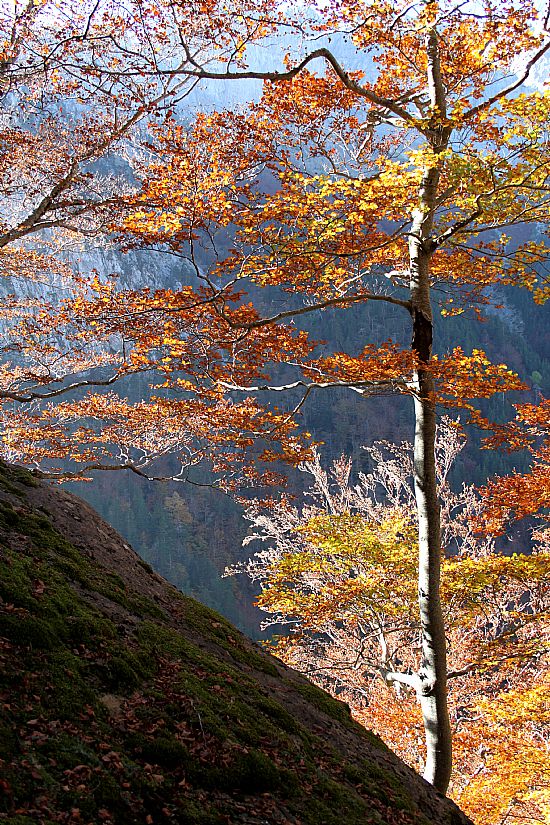Ansó 19 December
by Isabel Isherwood - 22:10 on 19 December 2016
Like Morvern, the valleys of the western pyrenees are heavily forested. And again like Morvern, the majority of that forest is in public ownership, although here they are managed by the municipality (like a community/parish council but with some actual authority) and by the Government of Aragón – essentially equivalent to the Highland Council. I am finding it very interesting to compare the two.
The public forests in Morvern consist of mainly of plantations of non-native species, and are of course largely managed commercially, while the forests in Huesca are composed of native mixed conifer and broadleaf.

Locals here complain that the forests are under-managed, from the point of view that they used to provide a lot of jobs in commercial forest management, which was stopped completely some years ago. However the forest does still provide a number of jobs. There are four men employed through the summer and autumn to keep tracks and paths open (for walking, hunting and moving sheep and cattle), and a team of four or five rangers who deal with a huge variety of tasks from wildlife monitoring to tree-fall clearance. And though there is little timber extraction the forests are used in other ways. Through the autumn and winter a lot of hunting goes on in the woods, mainly targeting wild boar - some of it is sport hunting through local clubs, and some is commercial (in the sense of selling the meat rather than taking paying guests out hunting). Sheep and cattle grazed on the high pastures come down into the woods in the winter for shelter and forage. Everyone heads for the woods with baskets in the autumn to collect fungi. Locals all have an automatic firewood entitlement and are also entitled to a permit allowing entry to the forest roads. And a nice touch that we recently discovered is that the paths team cut Christmas trees for the whole community at the start of December and leave them piled up in the village square for everyone to help themselves.

Biologically, these woods are fabulous. They are diverse, multispecies forests with complex understorey vegetation and plenty of regeneration. They are also stuffed with wildlife. There are signs of mammals everywhere. Wild boar are numerous, but there are also plenty of roe deer, badger, fox, pine and stone martens, otter, polecat, wildcat and the elusive genet….. Bear are still not doing well in the Pyrenees, but they are recorded here from time to time, and it will probably not be too long before the expanding wolf population in the Cantabrian Mountains spreads this way. There are black woodpeckers, white-backed woodpeckers, tengmalm’s owl, capercaillie and crested tits.

I can’t help comparing this with the sterile monocultures we have in Morvern and much of upland Scotland; both in terms of its biological diversity and its value as a resource to the community, the forested ground here is substantially richer than our spruce plantations. I realise I am not comparing like with like, and this is not a scientific assessment, but it is clear that these woods around Ansó, provide a similar number of jobs to the forestry plantations we are surrounded by in Morvern (jobs which here are all taken by local people rather than external contractors), and at the same time facilitate local people’s access to, interaction with, and benefit from, the woods. Perhaps the Morvern forests make more money – but as that does not manifest itself locally this is really neither here nor there. Indeed it seems probable that the forests here in Huesca could sustain some small-scale commercial exploitation without significant detriment to their diversity or local value. However Morvern forests do not offer locals access to firewood, Christmas trees (well officially, at least!), winter shelter for grazing animals, hunting and foraging opportunities, or even a diversity of well-maintained access paths apart from the frustratingly un-connected forest roads.

I’m not sure exactly what I’m concluding here, except that Morvern’s gloomy and forbidding ‘public’ forests, where locals are not really very welcome, seem like a poor substitute for the native forests we once had, or indeed for a genuinely public forest managed with the aim of promoting access to, connection with and use of the forest and the resources it offers…..
Add your comment